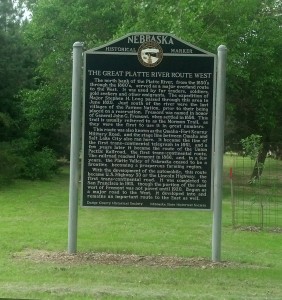
The Great Platte River Road carried countless westward settlers across the Great Plains and into the Rocky Mountains. (Photo by Michael E. Grass)
FREMONT, Neb. — Of the most important waterways in the United States, the Platte River usually doesn’t rise to the top. Unlike the Mississippi and Missouri, it’s extremely shallow.
Washington Irving called the Platte “the most magnificent and useless of rivers.” But the Platte, called “Nebraska” by Native Americans, helped change the shape of American history. This route allows a relatively easy path into the interior.
The Great Platte River Road was used by countless settlers heading west to Oregon, California and Utah. The Union Pacific Railroad’s Overland Route follows the Platte westward along what was the nation’s first transcontinental rail link.
With a level route into the interior, it made sense to have the Lincoln Highway follow the Platte west as well. From Iowa, the original alignment of the highway takes the road into Council Bluffs, Iowa, and Omaha, Neb. But U.S. 30 makes a beeline from from Iowa’s Loess Hills to Fremont via Blair, Neb. Since I was continuing onto Kearney that day, I opted for the more-direct route.
Crossing the Missouri River adjacent to the Fort Calhoun nuclear power station — which was sidelined in 2011 after severe flooding along the Missouri River — U.S. 30 climbs from the valley to higher terrain on its way to Fremont.
